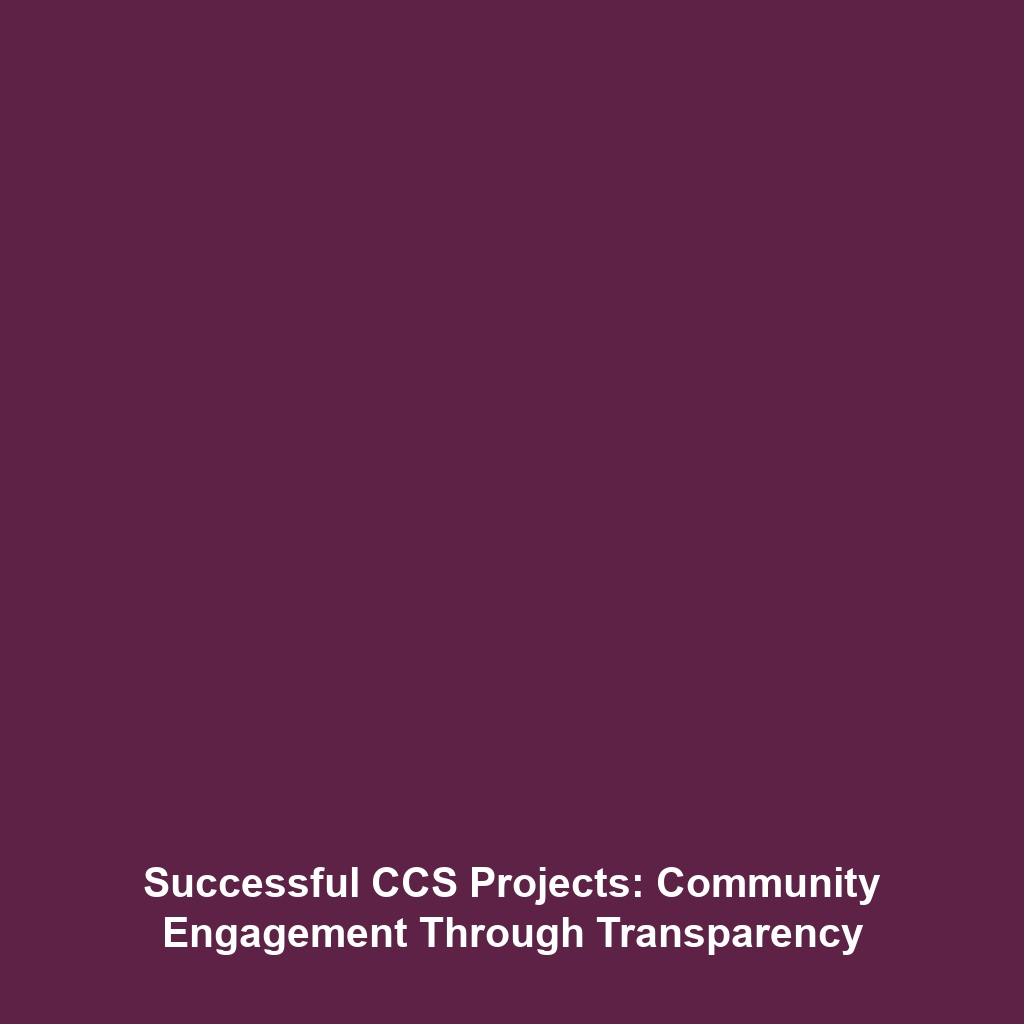Examples of Long-term Monitoring and Transparency in Carbon Capture & Storage (CCS)
Introduction
Long-term monitoring and transparency are critical components in the effective implementation of Carbon Capture & Storage (CCS) technologies. They help mitigate environmental concerns associated with greenhouse gas emissions by ensuring the safe storage and management of capturedCO2. Understanding these examples is essential for building public trust and enhancing technological adoption, leading to more sustainable practices in energy production and consumption. This article delves into how monitoring and transparency serve as pillars in addressing environmental concerns tied to CCS initiatives.
Key Concepts
1. Importance of Long-term Monitoring
Long-term monitoring involves continuous observation of CCS sites to assess the integrity of storage and the potential for leakage. Key strategies include:
- Regular site assessments to monitor geological formations
- Utilization of advanced technologies such as seismic imaging
- Data collection on pressure and chemical composition
2. Transparency and Public Engagement
Transparency in CCS operations is paramount for community engagement and regulatory compliance. It includes:
- Open access to monitoring data and reports
- Community involvement in data collection and interpretation
- Clear communication regarding risks and benefits
Applications and Real-World Uses
Real-world applications of long-term monitoring and transparency in CCS highlight its effectiveness. Notable examples include:
- The Sleipner Project in Norway has been a pioneer, incorporating comprehensive monitoring protocols to ensure the safe storage of CO2 in a saline aquifer. This project showcases how continuous data sharing reinforces stakeholder trust.
- The Boundary Dam Project in Canada demonstrates successful public reporting practices, resulting in higher confidence levels among local populations regarding the environmental impacts of CCS technology.
Current Challenges
Despite its potential, there are notable challenges associated with long-term monitoring and transparency in CCS, including:
- High Costs: Continuous monitoring can be expensive and resource-intensive.
- Data Reliability: Ensuring the accuracy and consistency of data over long periods remains a challenge.
- Public Perception: Mistrust in CCS technologies can hinder transparency efforts.
Future Research and Innovations
Future research in long-term monitoring and transparency is expected to drive innovations in CCS, including:
- The development of automated monitoring systems that utilize AI to improve data analysis.
- Advancements in sensor technologies that enable real-time monitoring of CO2 levels and geological stability.
- Innovative community engagement platforms that promote collaborative data sharing and public trust.
Conclusion
In summary, long-term monitoring and transparency are vital for addressing environmental concerns linked to Carbon Capture & Storage (CCS). Effective strategies not only mitigate environmental risks but also foster public support, facilitating the broader adoption of CCS technologies. For more insights on related topics, consider exploring our articles on Carbon Capture Technologies and Sustainable Energy Solutions.

